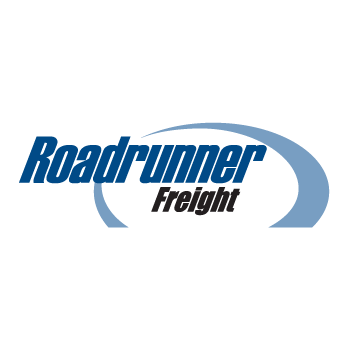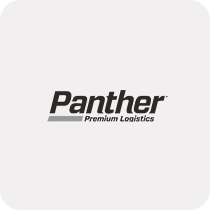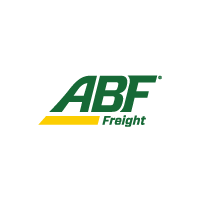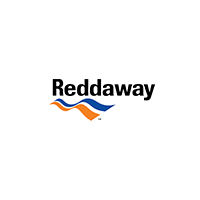
Track your truckload, intermodal and LTL (Less Than Truckload) shipment and FTL (Full Truckload) with Parcelsapp.com's free tool 24/7. You can also you track your freight using bill of lading (BOL) number referenced on your shipment's paper or electronic BOL.
Freight and logistics are intimately related in the transportation industry. Freight services involve moving freight by plane, ship, train, or truck, while logistics involves the coordination of freight’s movements, from warehousing to distribution across locations. Logistics companies provide freight services, but a freight company may not offer logistics.
PRO Number Tracking
Want real-time insight on your shipment status and transit time? Track your shipments with a PRO number. It’s used on LTL shipments. When your carrier picks up your shipment he will put stickers on each pallet and one on your copy of the Bill of Lading. Those are the numbers you need.
PRO number tracking gives you more transparency into the shipping process. If you’re not sure where your freight is, you can view the shipment status at any time instead of sitting back and feeling helpless. Using a PRO number is the easiest way to manage expectations and check on your shipment.
Tracking Freight Shipment
You can track a shipment directly from the main page of parcelsapp.com. Simply enter the shipment's PRO number in the search bar. A PRO number is the nine-digit number used to identify a freight bill, affixed to shipments in the form of a scannable barcode sticker. Once you've entered the PRO number, your tracking results will display for the shipment.
How to track truckload LTL freight with PRO Number?
The best practice is to use a PRO number when you ship LTL freight. Never used a PRO number before? Here’s how the process works.
-
Creating the PRO number:
Your carrier will create the PRO number and pair it with their SCAC to create a barcode. They’ll share that PRO number with you for your records.
-
Placing the PRO number:
Once the carrier generates the PRO number, you’ll see it on the BOL and shipping labels. Carriers usually place the PRO number on the outside of pallet for easy scanning access.
-
Consolidating (if needed):
But what happens if you have multiple pallets with different PRO numbers? If that happens, for the sake of clarity, your carrier may assign one PRO number that’s used just for tracking purposes. After all, scanning 50 different PRO numbers at every stop is tedious. One number is easier for everyone to keep track of.
-
Managing notifications:
You can use the PRO number to track your shipment through your carrier’s web portal or our freight tracking portal
United States Freight Companies
Although many supply chains are embracing intermodal transport networks around the world, trucking is still a vital component for thousands of businesses, contributing billions to the US economy.
![]() UPS Freight
UPS Freight
UPS Freight offers a complete range of asset-based and non-asset based services through UPS Freight and Coyote Logistics to meet your ground freight needs, including less-than-truckload (LTL), truckload, rail intermodal, specialty services, and transportation management.
Regional, interregional, and long-haul LTL services with a single integrated nationwide network. Get one pickup, backed by a day-definite, on-time guarantee within the 48 contiguous states and to or from Canada and the U.S. for current UPS Freight Tariff customers.
UPS Freight Tracking
![]() FedEx Freight
FedEx Freight
FedEx Freight is a leading North American provider of less-than-truckload (LTL) freight services across all lengths of haul to businesses and residences.
Whether speedy delivery is vital for your LTL shipments or you can trade time for savings, FedEx Freight makes your business and residential deliveries happen. In fact, FedEx Freight is the first and only nationwide LTL carrier to offer pallet-level tracking and visibility for your multiple-pallet shipments and domestic shipping without a paper Bill of Lading.* So you can count on our reliable service choices — plus value-added and specialized options — to take care of your LTL freight shipments and your customers.
FedEx Freight Tracking.
![]() XPO
XPO
XPO is a global leader in less-than-truckload transportation, and one of the largest LTL providers in North America. Their commitment to damage-free, on-time service is backed by approximately 7,500 tractors, 24,000 trailers and more than 12,000 professional drivers, operating out of 290 service centers.
XPO LTL coverage in North America extends to every state, including Alaska and Hawaii, and about 99% of all US postal codes. For cross-border requirements, they have strong relationships in place for movements to and from Mexico, Puerto Rico and Canada. We’re also a leader in LTL transportation in Western Europe, where they provide consistent LTL solutions for customers with multinational markets.
XPO LTL Freight Tracking
![]() Saia LTL Freight
Saia LTL Freight
Saia LTL Freight is one of the nation's leading carriers, providing less-than-truckload (LTL), truckload, distribution and consolidation and logistics services. Saia has 168 terminals across the 48 states in the contiguous United States and Canada.
Through Saia's network of partners it serves most of the United States including Alaska, Hawaii, Mexico and Puerto Rico. The three operating service groups of Saia are Saia LTL, Saia Logistics Service and LinkEx. Saia has over 10,500 employees and 28,000 shipments per day as of 2018.
Saia LTL Freight Tracking
![]() Pilot Freight Services
Pilot Freight Services
With a trusted network of global partners in 190 countries, Pilot can move your freight anywhere in the world. Pilot Freight Services is a full-service global transportation and logistics company with over 75 locations throughout North America, western European operations, and administration offices in the Netherlands and Spain, and a worldwide network of overseas partners.
Pilot Freight Tracking
![]() YRC Freight
YRC Freight
YRC Freight is the largest subsidiary of YRC Worldwide Inc. with corporate headquarters in Overland Park, Kan. YRC Freight is the leading transporter of industrial, commercial, and retail goods, specializing in solutions for businesses across North America through a full-service network, advanced information technologies, and proactive customer service.
YRC Freight Tracking
![]() Roadrunner Freight
Roadrunner Freight
Roadrunner Transportation Systems (RRTS) offers a host of freight transportation and logistics services. The company's truckload (TL) operations serve customers throughout North America with a focus on the automotive, industrial, consumer product, and food and beverage industries. The company's logistics services include truckload brokerage, LTL shipment execution, international freight forwarding, and customs brokerage. RRTS' less-than-truckload (LTL) freight transportation operations combine freight from multiple shippers into a single truckload and serve customers across the US and parts of Canada.
Roadrunner Freight Tracking
![]() Old Dominion Freight Lines
Old Dominion Freight Lines
Old Dominion Freight Line, Inc. is an American less than truckload shipping company. It offers regional, inter-regional and national LTL service. In addition to its core LTL services, the company offers logistics services including ground and air expedited transportation, supply chain consulting, transportation management, truckload brokerage, container delivery and warehousing, as well as household moving services. It contracts with freight forwarding services worldwide.
Old Dominion Freight Tracking
![]() Estes Express
Estes Express
Estes is the largest, privately-owned freight shipping company in North America.
As an asset-based freight transportation and custom logistics solutions provider, Estes manages a fleet of more than 7,000 tractors and 30,000 trailers, as well as a network of nearly 265 terminals. And because company was built on the solid foundation of financial stability, Estes have both the skill and resources necessary to stay nimble and responsive to the ever-changing shipping needs of their customers
Estes Express Freight Tracking.
![]() Panther Premium
Panther Premium
Through their ground expedite service Panther Premium Logistics®, ArcBest® delivers your time-sensitive, mission-critical and high-value freight with speed and precision. We provide door-to-door premium logistics services 24/7/365 — solving even the toughest shipping and logistics challenges.
The Panther network is one of the largest, most diverse ground fleets in the industry. Choose from a range of transportation options — all equipped with satellite tracking, fleet-wide emergency messaging, in-cab and remote panic alarms, door sensors and security locks.
Panther Premium Freight Tracking.
![]() Kuehne + Nagel
Kuehne + Nagel
Küehne + Nagel International AG (short for Küehne + Nagel or KN) is an international transport and logistics company headquartered in Schöndelegay, Switzerland. The company was founded in 1890 in Bremen (German Empire) by August Kuehne and Friedrich Nagel.
The company provides sea freight and air transportation, contract logistics and warehouse and project logistics services with an emphasis on providing IT solutions.
Kuehne Nagel Freight Tracking
![]()
DSV Panalpina A/S (second name: DSV A/S) is a Danish transport and logistics company offering transport services globally by road, air, sea and train. Since its foundation in 1976 by nine independent Danish hauliers, the company has achieved rapid expansion and international presence, predominantly through a series of strategic competitor acquisitions
Its main activities lie within road transport (trucking) networks in Europe, North America and South Africa, and its global air and sea freight forwarding business. The group also has a growing contract logistics business.
DSV Freight Tracking
![]() ABF Freight
ABF Freight
ABF Freight, an ArcBest® carrier, operates a less-than-truckload network across North America to provide seamless transportation services in short- and long-haul markets.
ABF Freight Tracking
![]() Reddaway
Reddaway
USF Reddaway Inc. is an American less than truckload (LTL) trucking company based in Tualatin, Oregon. Reddaway is a subsidiary of transportation and logistics holding company Yellow Corporation (formerly known as YRC Worldwide) and operates in the Western United States as well as British Columbia, Alaska, and Hawaii.
Enter PRO number to track USF Reddaway shipment
![]() Averitt
Averitt
Averitt Express Trucking is a transportation and supply chain management company that is based in Cookeville, Tennessee. The company was founded as Livingston Merchant's Co-op in 1958 and became Averitt Express in 1969. Averitt Express operates mainly in 18 states in the Southeast United States, including Florida, Georgia, South Carolina, North Carolina, Alabama, Mississippi, Virginia, Kentucky, Texas, Oklahoma, Arkansas, and Tennessee. They also have a single terminal in California, Ohio Wisconsin Missouri, and Illinois.
Enter PRO number to track Averitt shipment
![]() Southeastern Freight Lines
Southeastern Freight Lines
Southeastern Freight Lines (SEFL) is a privately owned American less than truckload (LTL) trucking company based in Lexington, South Carolina that operates in the Southeastern and Southwestern United States.
Southeastern Freight Lines operates 88 service centers in the Southeast, Southwest and Puerto Rico with a primary focus on next-day delivery, using its own line of semi-trailer trucks. The service centers were established to provide customers with reliable deliveries. There is also a network of service partners for transportation to other areas of the United States not in the South. Transportation internationally includes Canada, Mexico, and the United States Virgin Islands
Enter PRO number to track Southeastern Freight Lines shipment
What is PRO Number?
A PRO number, or PRO tracking number, is used to track the progress of each shipment. You can track your freight order with your PRO number on Parcelsapp.com.
The PRO number is a 7-10 digit number that carriers use to track and organize shipments.Shippers use the PRO to view pickups, stops, and deliveries.
Depending on who you ask, “PRO” is short for “progressive rotating order” or “progressive number.”
Most consumers have actually used a PRO number (often reduced to just “PRO” in freight jargon) without realizing it. Carriers use PRO numbers to track shipment status from pickup to delivery. If you’ve ever ordered a package from Amazon and tracked it, you’ve seen PRO numbers at work.
It’s the best way to get a high-level view of where your freight is and its expected delivery time. Most LTL shippers use PRO. In fact, PRO is considered the industry standard for tracking. Some carriers use bill of lading (BOL) numbers or pickup numbers, but, by and large, you can expect your carrier to use PRO.
Technically speaking, the PRO number isn’t your tracking number. It’s a component of the tracking number. It’s paired with a Standard Carrier Alpha Code (SCAC) to form a longer tracking number or barcode. Every carrier has a unique four-character SCAC, which the National Motor Freight Traffic Association (NMFTA) sets. It identifies not only the shipment, but the carrier transporting that shipment.
You use the PRO and the SCAC code to form a barcode. This is the scannable code that carriers place on pallets before shipping. To update the tracking status, they simply scan the code, then the online tracking system sends you updates throughout transit.
What's Less Than Truckload (LTL) Shipping?
If your freight is too large to be considered a parcel shipment but doesn’t need a semi-truck all to itself, it’s probably an LTL shipment. LTL freight companies combine multiple LTL shipments to create a single truck comprised of different LTL loads. This maximizes the efficiency of the truck and cuts back on costs.
LTL shipping might be the right option for you if your freight weighs over 150 lbs. but less than 15,000 lbs. and you want to lower your overall transportation costs.
When you ship LTL you only pay for the portion of the trailer your freight takes up, as opposed to the full trailer. This is a cost-saving and efficient option for many companies.
What is Full Truckload (FTL) Shipping?
FTL shipments are generally considered to be the most cost-effective option for transporting cargo if the freight is capable of filling an entire trailer. Shipments that are greater than 5,000 to 10,000 lbs. are usually the ideal size for FTL shipments. The average weight that can be transported on a trailer is usually between 42,000 and 44,000 lbs.
FTL is also the go-to freight transportation option if you’re planning to ship cargo that has special requirements. These can include anything from needing a flatbed trailer to a truck with climate control for temperature sensitive products.
Unlike LTL shipments which often make several stops and are transferred between trucks multiple times before arriving at their destination, FTL freight doesn’t require any extra steps. This means that shipping full truckload is often a much faster option than shipping LTL.
How can I track an LTL shipment using an Amazon-Partnered carrier?
You can either go to the carrier’s website and enter the tracking number. Saia, Estes, any of the trucking companies have tracking available.
But if you are tired of opening multiple trucking companies' websites with different layout and design, struggling to find where to enter PRO, BOL numbers,
just enter your PRO, B/L number into freight search field above and click "Track Freight".
Read along about freight shipments where you use an Amazon Partnered Carrier.
The only thing you have from Amazon is the Amazon BOL number or the Amazon Purchase Order ID. Those are shown on the top right corner of the BOL. The BOL (Bill Of Lading) is something that Amazon emails you on the morning of the pickup date, or at some other point.
Some carrier web sites let you track by BOL number, but the Amazon BOL-Number doesn’t always “register”, so you can call the carrier and tell them you have a Purchase Order number.
What's the Difference between Freight and Cargo?
Freight and cargo are two terms associated with the transportation of goods, usually for commercial instead of personal purposes. While these two terms are often used interchangeably and are even debated, there are, in fact, a few differences between cargo and freight.
What is Freight?
The term freight is typically for goods transport by train or truck. This is why we have the terms freight truck and freight trains. However, this is not always the case, as the term “air freight” is commonly accepted as correct usage. This is because freight is also the term used for the payment when certain goods are transported. To further complicate the matter, freight can also mean a cargo being transported via truck, train, plane, or ship. However, mail can’t be considered freight, as it is only used to describe commercial goods. Freight can denote many things. It may mean the product, merchandise, the amount payable, or the money charged. Cargo being transported may be referred to as freight if referring to both the goods and the money charged for their transport.
What is Cargo?
The term cargo is generally used for goods transported by ship or plane. We have cargo planes and cargo ships. Mail may also be called cargo. Used specifically for the goods only, cargo is not used to include the payment or the money being charged for the transport of goods. This means any product that is being transported can be called a cargo. Large cargo containers are usually used in transporting the goods called cargo. Cargo can be transported on pallets, in cargo handling nets, or by other means.
What is a Freight Forwarder?
The original function of a freight forwarder was to arrange for a carriage to transport goods by contracting with various movers. The responsibilities of a forwarder included advice on documentation and customs requirements in the country of destination. Agent overseas looked after customers’ goods and kept the forwarder informed of potential problems in the movement of goods.
The forwarder has the same responsibilities and operates either as a domestic carrier, with a corresponding agent overseas or with his or her own branch-office. In one transaction, the forwarder act as a carrier (principal), or as a trade agent for the customer, or both.
In the U.S., companies that handle domestic freight by using trucks or cars must register with the Department of Transportation's Federal Motor Carrier Safety Administration. These forwarders are "carriers" who accept freight for transport and are liable for delivering the freight under their bill of lading.
What does Freight Forwarder do?
A freight forwarder specializes in the organization and arranging of storage and the shipping of merchandise on behalf of its shipper. Freight forwarders help keep companies’ import and export shipments flowing. They are sometimes known more simply as forwarders, or forwarding agents. Freight forwarders have a contract with a carrier or often multiple carriers to move the products. Forwarders do not move the goods but act as a specialist in logistics. The carriers they use have a variety of modes of transportation, such as ships, airplanes, trucks, and railroads. They may even use multiple modes for a single shipment. For example, a freight forwarder may arrange to have the cargo moved from the manufacturer to an airport by truck, then flown to the destination city, and transported from the airport to a customer's building by another truck.
Freight forwarders who specialize in international shipments have additional expertise in preparing and processing customs documentation, and they handle the shipper's export declaration, bill of lading, the invoice, and other documents required by the carrier and countries of export and import. In Europe, some forwarders specialize in "niche" areas such as rail-freight.
Freight forwarders often help businesses with packaging. This task has different levels of difficulty, depending on the product and its final destination. Packaging for shipping within the US is generally simpler than packaging products for extended transportation, as they may need to be temperature controlled or shipped in large cargo containers, and may be loaded and unloaded multiple times along the route. Shipping items by air necessitates lighter-weight packaging, to keep the weight and therefore the cost down.
Freight forwarders may help businesses correctly label packages, to make sure they contain information about the products in the container, any hazardous items, the country of origin, and any details required in the language of the destination country.
Shipping items overseas involves complex documentation that requires specialist knowledge. A freight forwarder helps with the documentation, which may include the following: the Bill of Lading, which is the contract between the owner of the goods and the carrier, a commercial invoice, the Certificate of Origin (COO), the inspection certificate, an export license, Shipper's Export Declaration (SED), and the export packing list.
Unimodal vs. Multimodal vs. Intermodal transportation of goods
In unimodal transportation of goods, the products are delivered using a single mode of transport, mainly by road, as it is the most efficient for door-to-door deliveries.
In order to get the most efficient possible shipment, two or more types of transport can be combined, such as road, rail, sea and air. Combined transportation can be classified into two categories: multimodal and intermodal. They can be used not only for long distance deliveries, but also when the customer has a limited timeframe for the delivery or needs a shipment that requires special handling.
What is the difference between intermodal and multimodal transport?
Let’s use the example of a shipment from USA to Italy. In this case, the parcel is first picked-up by a truck to be delivered to the port, where it is then shipped to Europe by sea and delivered to the consignee’s city by train. If intermodal shipping is used, each segment of transportation needs to be arranged individually with different carriers, each with their own contract. Intermodal transportation demands more logistics efforts, but it allows the sender to negotiate conditions with each logistics provider.
However, if a company opts for a multimodal type of transport, the whole shipment will be under a single contract with only one logistics provider. This means that one single logistics provider is held responsible for the entire transport, even if they outsource some of the segments to sub-carriers, referred to as “actual carriers”. This type of transport requires less logistics coordination because the entire transport is organized with one unique company.
Avantages of unimodal transport:
- Highly practical for door-to-door shipping in short distances.
- It is frequently the cheapest option when the origin and destination are connected by land.
Disadvantages of unimodal transport:
- Since road transport is usually used, there is a high carbon footprint associated with unimodal transportation.
- Time of delivery can be high for long distance shipments.
Avantages of multimodal transport:
- Centralization of responsibility. The logistics provider should be the one to provide tracking and to solve problems such as delays.
- Combination of different means of transport makes the delivery faster.
- Having one single contract is more practical and requires less logistics effort from the sender.
- Depending on the means of transport involved, it has often less environmental impact.
Disadvantages of multimodal transport:
- It might not be possible to select the sub-carrier that operates on a specific part of the route.
- Prices cannot be negotiated for each carrier.
Avantages of intermodal transport:
- Possibility of negotiating prices with each carrier.
- It is easy to stop the shipment at any point if necessary.
Disadvantages of intermodal transport:
- Requires a lot of logistics coordination.
- Less flexibility to handle unexpected situations, such as delays.


















